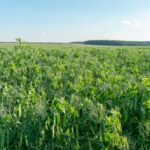Farm work plays an essential role in ensuring food security, but it is also one of the most hazardous industries globally. From heavy machinery to unpredictable livestock and extreme weather conditions, farmers face numerous risks daily. Understanding farm safety and investing in proper equipment are key to minimizing these dangers. Here’s a breakdown of farm safety basics and the role of equipment in reducing risks.
Common Farm Hazards
Farmers encounter a variety of hazards, including:
- Machinery Accidents: Tractors, harvesters, and other equipment can cause severe injuries if not operated correctly.
- Falls: Working at heights, such as silos or barns, increases the risk of falls.
- Chemical Exposure: Pesticides, herbicides, and fertilizers can lead to respiratory and skin issues without proper handling.
- Livestock Injuries: Animals can be unpredictable, posing risks of bites, kicks, or crushing injuries.
- Fatigue and Stress: Long hours and physical strain can lead to accidents due to reduced alertness.
Farm Safety Basics
To mitigate risks, every farm should adopt these safety practices:
- Training and Education: Ensure all workers are trained on equipment usage, emergency procedures, and hazard identification.
- Proper Signage: Clearly label hazardous areas and equipment.
- Regular Equipment Maintenance: Conduct routine inspections and repairs on all machinery to prevent malfunctions.
- Emergency Preparedness: Keep first aid kits accessible and ensure everyone knows evacuation and emergency response plans.
- Adequate Rest: Encourage regular breaks to combat fatigue and maintain mental sharpness.
How Proper Equipment Reduces Risks
Using the right equipment and protective gear significantly lowers the chances of injuries and fatalities on a farm. Here’s how:
- Personal Protective Equipment (PPE)
- Gloves: Protect hands from chemical burns, cuts, and abrasions.
- Masks and Respirators: Prevent inhalation of harmful chemicals or dust.
- Steel-Toed Boots: Shield feet from heavy objects or animal-related injuries.
- Eye Protection: Guard against flying debris or chemical splashes.
- Safe Machinery
- Roll-Over Protection Structures (ROPS): These are essential for tractors to protect operators in case of rollovers.
- Guardrails and Shields: Prevent accidental contact with moving parts.
- Automatic Shut-Off Systems: Stop machinery immediately during malfunctions.
- Livestock Handling Equipment
- Crush Pens: Safely contain animals during medical treatments or transport.
- Loading Ramps: Minimize the risk of slips and falls for both livestock and handlers.
- Storage Solutions
- Proper Chemical Storage Units: Prevent spills and unauthorized access to hazardous substances.
- Secured Ladders and Platforms: Reduce falls when working at heights.
Building a Safety-First Culture
Beyond equipment and procedures, fostering a safety-first mindset is critical. Regular safety drills, open communication about risks, and prioritizing worker well-being can create a farm environment where safety is second nature.
Farm safety is a shared responsibility that requires awareness, the right equipment, and adherence to best practices. By investing in high-quality protective gear, well-maintained machinery, and thorough training, farmers can protect their workers, livestock, and operations from unnecessary risks. A safe farm is a productive farm, ensuring long-term sustainability for future generations.
Join 'Farmers Mag' WhatsApp Channel
Get the latest Farming news and tips delivered straight to your WhatsApp
CLICK HERE TO JOIN






